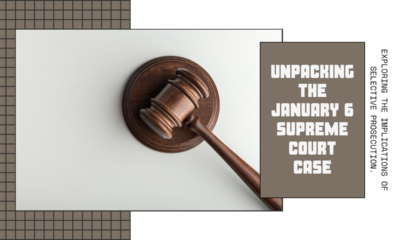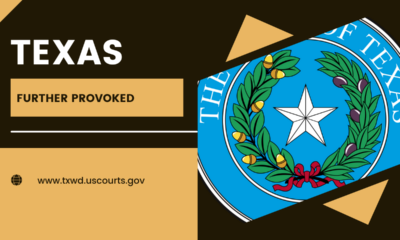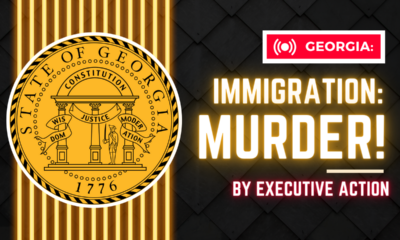News
Texit – can Texas regain its independence?
Texit – Texas secession from the Union – comes to the fore with the latest Biden Administration actions. And Texit is more likely than you think.

The 2020s now appear to be the Decade of the Exit. The United Kingdom started it, with Brexit – the exit of Britain from the European Union. Not until 2020 did the UK finalize their exit, but they did it. In America, “Calexit” would have broken the mold—except that the “election” of Joe Biden made it unnecessary. Yet a movement to create a “New California” apart from the big (and neocommunist) cities of Los Angeles, San Diego, and San Francisco continues to attract followers. Elsewhere, eastern counties of Oregon want to join Idaho. Likewise, western Maryland counties and rural Virginia counties want to join West Virginia. But no movement will likely get as much attention as Texit – an attempt by Texans to regain their independence.
Texit in popular fiction
Texit, or something like it, has been a staple of popular fiction – mostly science fiction – since at least the 1960s. As your editor ought to know, having lived in Texas for a total of eight and one-half years. At least five mass-market paperback titles came out during those years, three sympathetic to Texas and two not so sympathetic:
- Jake Saunders and Howard Waldrop. The Texas-Israeli War: 1999. Ballantine Books, 1974. Texas asserts its independence, and then the federals actually ask the Israelis to help take Texas back.
- Fritz Leiber. A Specter is Haunting Texas. Walker and Company, 1969. Hundreds of years into the future, a “Greater Texas” forms. But these Texans have augmented themselves with hormonal and genetic treatments. They then enslave the non-augmented, who turn to the title character to liberate them.
- Daniel da Cruz. The Ayes of Texas. Del Rey, 1982. When the Soviet Navy sends an expeditionary force toward Houston, Texas declares its independence and sends its namesake battlewagon (USS Texas BB-35), after an entrepreneur has transformed it into a fearsome fighting ship more than capable of defeating that task force. Author Daniel da Cruz would go on to write two more books in his Republic of Texas series: Texas on the Rocks and Texas Triumphant.
Why is Texas the setting for so many speculative novels? No other State gets such attention.1 For answer, we must examine Texas itself, and its history.
Texas in real history
First to live in Texas were Native Americans – the same people who either walked the Bering Land Strip or paddled across the Bering Straits and then spread southward in multiple tribal groups. Among those groups were the Caddo tribe, who actually gave Texas its name. Early Spanish explorers encountered the Caddo and learned from them their word Taysha, meaning “friend.” The Spanish corrupted this word into their name Tejas for the region. English speakers changed “j” to “x” in the name of Texas, as they did with the names of Mexico and what is now Bexar County in Texas.
Thereafter Tejas, as the Spanish then called it, remained part of the Spanish Empire. Specifically it made part of the Viceroyalty of Mexico. The most notable Viceroy that Mexico had was Bernardo de Galvez, who led Spanish forces against the British during the American War for Independence. General Galvez staged out of Spanish Louisiana to capture British West Florida. (That region today forms the “panhandles” of Louisiana, Mississippi, and Alabama.) Today Texas remembers Viceroy de Galvez through the name of the county and city of Galveston.
The first Texit – the Texas War for Independence
No discussion of Texit can possibly take place without inviting comparisons to the Texas War for Independence in 1836. American settlers in “Tejas” resented the lack of the freedoms they had enjoyed in the United States. For Generalissimo Antonio Lopez de Santa Ana was an arbitrary and sometimes cruel dictator. This prompted men like Tennessee’s David Crockett and Alabama’s Wililiam Barrett Travis to decide to fight for independence.
Of the Battle of the Alamo, every Texan soon learns in school. (Or they did while your editor lived there.) Travis’ forces and Crockett’s Tennessee Volunteers fell to the last man at the Alamo. Nevertheless, the Alamo defenders accomplished two things:
- Bought time for General Sam Houston to turn raw recruits into a fighting force, and
- Inspired those forces when at last they brought Santa Ana to battle at San Jacinto, where Texas actually won.
But Texas would enjoy this independence for only nine years.
Texas joins the United States
The Texas Annexation in 1845 might seem in retrospect a poor bargain. Popular memory associates it with President James K. Polk, but it was President John Tyler who negotiated it before the Polk inauguration. Polk got the signatures in December of his first year in office. He then almost immediately needed a declaration of war, because the Mexicans tried to take Texas back. The result was the Mexican War, that the “snowflakes” of that era scornfully called “Mister Polk’s War.” Any war is Mister President’s War to its detractors.23
The Texas that joined the United States held much more land than does Texas today. In fact, Texas ended in ceding much land to the New Mexico, Indian (Oklahoma), Kansas, Colorado, and Wyoming Territories. The Compromise of 1850 fixed the present Texas-New Mexico border and settled a long-standing territorial dispute.
Perhaps one could call the Texas secession of 1861 the “Second Texit.” On 1 February 1861, Texas joined the Confederate States of America. That country, of course, lost the War Between the States (1861-5). Texas gained re-admission to the United States in 1869. The Texas State Library and Archives Commission maintains this narrative of these events.
Texit today
And so we come to Texit as Texans contemplate it today. A Texas Nationalist Movement already exists – and has existed for twenty-five years.
Mr. Daniel Miller, head of the TNM, explains to Steven Turley, PhD, his decision to strive for Texit 25 years ago, and the reasons for his confidence today.
Mr. Miller has another site, at another domain, offering further insight into Texit and other pressing issues. Miller explicitly draws inspiration for Texit from Brexit (see above).
Last Tuesday, Texas Representative Kyle Biedermann (R-Fredericksburg, Texas) introduced HB 1359, the Texas Independence Referendum Act, in the Texas House.
Mr. Biedermann probably couldn’t have come from a more likely place. Comal County, where his town lies, is one of the most conservative counties in all of Texas. It lies northeast of Bexar County and thus is in the region of the southwestern corner of the Texas Triangle. (The three corners of the Texas Triangle are three pairs of twin cities: Dallas-Fort Worth, Austin-San Antonio, and Houston-Galveston.) Comal County, the seat of which is the town of New Braunfels, is largely a German-Texan colony. Its people are as much Texan as they are German, or more so.
The rationale for Texit
Dan Miller has a simple rationale, which Rep. Biedermann echoes. The government of the United States does not represent the values of Texans. Texans value independence of thought, word, deed, and lifestyle. The federal government agrees with none of these things, especially today.
Dan Miller first conceived of Texit (though not by that name) in 1995, during the Presidency of Bill Clinton. The Presidencies of George W. Bush (who self-identifies as a Texan) and Donald J. Trump (who might as well be a Texan, given his larger-than-life character) delayed the Texit movement.
But the obvious, outright, and outrageous theft of the Election of 2020, and the plethora of Executive Orders that have issued from Joe Biden’s desk, have rekindled Texit sentiment. Understand this: CNAV will always assert that an illegal and extraconstitutional electoral-vote compact among six corrupt Governors and their Secretaries of State delivered their electoral votes to Joe Biden, apart from, above, and against the interests of the people of the States involved and the expression of their will. (Those States are Georgia, Pennsylvania, Michigan, Wisconsin, Arizona, and Nevada.) HR 1, the “For the People Act,” will serve only to show other, equally corrupt Secretaries of State how they did it and enable them to do it everywhere. (For further discussion of this and other federal perfidy, see this essay by Linda (The Book of Humanitarian Hoaxes) Goudsmit.)
What militates against it
Texit faces one serious practical obstacle: the vast superiority of the United States Armed Forces. The federal government mustered two divisions’ worth of National Guardsmen to intimidate Washington, D.C. residents and visitors during the Inauguration. The U.S. Army today has 1.4 million active-duty members and 845.5 thousand reservists under arms. The National Guard contingent therefore represented about one-tenth of one percent of the Army’s strength.
But: many of those personnel are themselves Texans. And Governor Greg Abbott (R-Texas) recalled his Guard contingent from Washington after the incredibly shabby (and foolish!) treatment the Biden administration and Capitol Police accorded them.
The Texas Military Department already exists to run the Texas Army and Air National Guards and Texas State Guard. Figures on total strength of these commands are not readily available.
Beyond simple failure of nerve, a Texas Independence Referendum might fail simply because too many people living in Texas like the current mission of the federal government, and the benefits they themselves derive from it. Mr. Biedermann’s proposal, and the Referendum itself if his bill passes, will test this.
What militates for Texit
But Texit might succeed for any of a number of reasons. First, Texas does have the right, per the original Annexation Agreement, to divide itself into five States. True, as Snopes asserts, any State can subdivide with the consent of the Congress. But HR 46, the Joint Resolution for Annexing Texas to the United States, contains such consent in its text. That Texas never did that before is because Texans prefer to live in the largest State among the continental States. Today Congress would have to revoke their consent, and do it before Texas passed a resolution of subdivision.
But Texit represents secession, not division. True again. But as Dave Hodges points out in this video:
Texas could threaten to divide if the federal government did not let them go quietly instead. A Texas division today would overnight change the balance of power in the U.S. Senate, and decisively so. The distribution of Senate seats would suddenly be 58-50. And then the Senate would never consent to passing any law, much less a joint resolution of constitutional amendment, to make the District of Columbia a State. Nor could Congress grant Statehood to Puerto Rico, nor consent to California dividing three ways around its three largest cities.
According to Hodges, Joe Biden, politician that he is, might accept that bargain. (But Kamala Harris would not! She would ask how dare Texas presume, etc.)
Suppose no bargains
Suppose, then, that Kamala Harris refuses to bargain? (Joe Biden might so suffer from organic dementia that he will do anything Kamala Harris says. Or she might invoke the Twenty-fifth Amendment. But getting two-thirds even of this Congress to sustain her declaration of Presidential inability would be a struggle.)
Then Mr. Miller asks: what’s the U.S. military going to do? Carpet-bomb Houston’s Galleria and the Dallas-Fort Worth Airport and the oil tank farms of Beaumont? Miller laughs at the prospect, pointing out the dependency of the rest of the United States on crude oil that is pumped, stored, refined, and/or otherwise processed in Texas. More seriously, he dares the U.S. military to launch such an assault on a population of civilians on American soil. He guesses that the U.S. armed forces would split. The Texit War would then become a mutiny.
Why didn’t that happen in the War Between the States? For one reason only, that Dan Miller does not mention: slavery. The Confederate States of America formed to guard their power to enslave others. That, people in the North, down to ordinary voters, found execrable. Which is why Abraham Lincoln proclaimed emancipation in 1863. (Blacks in Texas still observe “Juneteenth,” the anniversary of word of the Emancipation Proclamation reaching Texas on June Nineteenth, 1863.) Today, Texas would stand accused of nothing remotely comparable to practicing slavery.
Other military resources for a Republic of Texas
Texas has other possible military resources, even going beyond a split in the armed forces, the repatriation of Texans to join the Armies of Texas, and the formation of a Corps of Foreign Volunteers, similar to the Machal of Israeli War for Independence fame. Texas has Elon Musk, who already has decided to re-domicile himself in Texas instead of California. “Elon Musk Holdings” (which doesn’t have that explicit name yet) includes Tesla and SpaceX. Both these companies could become defense contractors for the Republic of Texas. Tesla is already building a “Terafactory” in Travis County. Tooling it up to produce Cybertrucks, which already can serve as armored fighting vehicles with minimal modification, would be simple. Almost as simple would be the design and mass production of a Cyber Tank.
Furthermore, SpaceX has its proving ground in Boca Chica, Texas, along the Gulf Coast. They could withdraw their fleet to Boca Chica and the Port of Houston. That fleet includes two oil rigs, that SpaceX intended as marine launch platforms for their Starship heavy lifter. Those two rigs could instead become the largest aircraft carriers in the world, and launch airstrikes and suborbital “space strikes” to devastating effect. (Refurbishing the old Battleship Texas might not be practical; the Big T has sprung many leaks of late. Except that she already has had her guns restored!)
Alliances
Mr. Miller counts on other States to join with Texas to form a second Confederacy. This one would not defend slavery and is not likely to replicate the original Confederate Constitution. But the recent anti-energy executive actions from Washington have provoked Texas’ neighboring States into at least supporting Texit. An alliance of Texas, Louisiana, Oklahoma, Mississippi, Alabama, Florida, and Tennessee would be extremely formidable. Forming that “first wave” alliance might be enough to convince the Carolinas (South Carolina, anyway) to join. (Georgia would be problematic, given recent events.)
Furthermore, foreign affairs might turn the Saunders and Waldrop proposition on its head. Far from going to war against Texas, the IDF might fight alongside the Texas Army. They would do this if only to gain access to SpaceX’ revolutionary technology. And perhaps to buy some Cyber AFVs and Cyber Tanks for the IDF! (And the Israelis could count on Texas never ordering its Ambassador to relocate out of Jerusalem and back to Tel Aviv! The Republic of Texas would start at once to build a Texas-sized embassy in Jerusalem.)
How Texas and Texans stand to gain from Texit
Mr. Miller and Dr. Turley pointed out many ways in which Texas would benefit immediately from secession:
Texas is one of the few net tax producers. Which means Texans pay more to the federal government than they get back. This includes the spread between Social Security taxes and Social Security benefits. Furthermore, Galveston County long ago inaugurated its own retirement plan for county employees, that provides better benefits than Social Security. Ford Bend and Brazoria Counties joined in. Adapting that plan for all of Texas would be simplicity itself.
The spread between Federal Income Tax payments and federal grants back to Texas also tells in the U.S. government’s favor today. So Texas could keep all that revenue in-country, as it were.
And how many such programs would even be necessary? A Republic of Texas could reform its institutions to allow prosperity of which even Donald Trump scarcely dreamed! For Ronald Reagan was right: government does not solve people’s problems; government is the problem.
CNAV will discuss suggestions for reform in a Texas after Texit later. For now, let us observe that Texas has much to gain, far more than it has to lose. For if the Biden-Harris-Pelosi troika continue their depredations, none can blame Texans for deciding, “Anything is better than this!”
Footnotes
1 The novel Hawaii by James A. Michener does not count. That is a novelization of actual history, not speculation on Hawaii’s future.
2 One such detractor, James Russell Lowell, wrote a four-stanza screed that for decades was a fixture in the Baptist Hymnal. It begins thus: “Once to ev’ry man and nation / comes the moment to decide, / in the strife of truth with falsehood, / for the good or evil side.” Baptists sung this to the tune they call “Ebenezer,” which also is the tune for two other hymns: “Here is Love, Vast as an Ocean” and “O the Deep, Deep Love of Jesus.”
3 Let every historian take note: no such war as “Mister Trump’s War” took place!
-

 Executive2 days ago
Executive2 days agoJanuary 6 case comes down to selective prosecution
-

 Executive1 day ago
Executive1 day agoBiden ballot woes continue
-

 News2 days ago
News2 days agoRolling the Dice on Republicans: Has the Right Become Delusional?
-

 Civilization1 day ago
Civilization1 day agoPresident Biden Must Not Encourage Illegal Mass Migration From Haiti
-

 Executive1 day ago
Executive1 day agoWhy Fatal Police Shootings Aren’t Declining: Some Uncomfortable Facts
-

 Guest Columns1 day ago
Guest Columns1 day agoWhat Was Won in No Labels’ Crusade
-

 Constitution1 day ago
Constitution1 day agoEquality Under the Law and Conflicts of Interest in New York
-

 Civilization2 days ago
Civilization2 days agoBiology, the Supreme Court, and truth















[…] Your editor discussed some of them here. […]
[…] Biedermann (R-Fredericksburg, Comal Co.) introduced his Texas Independence Referendum Act – the Texit Bill. After the Texas House reconvenes, the debate will begin. For Texit to succeed, the bill must […]
[…] Biedermann and Dan Miller have started something, called Texit, that represents a kind of divorce. But divorce between two incompatible peoples disputing the same […]
[…] Texit, the Texas Exit, could make history. But this history will not be tame. William Barrett Travis, Jim Bowie, David Crockett, and their fellow martyrs could tell you that, if they could speak. In the spirit of the Battle of the Alamo, CNAV continues its Texit war game series. […]
[…] the Texit war game has shown, the Texas Exit will have casualties. CNAV does not expect the Biden-Harris […]
[…] We hear this from Dan Miller of the Texas Nationalist Movement. He cites this as a good reason to pass the Texas Independence Referendum Act and to vote Yes. For further information on this Act, see here. […]
[…] introduction of the Texas Independence Referendum Act (HB 1359) on 26 January. CNAV began with an analysis of things militating for and against Texas independence, then offered a comprehensive war […]
[…] Texit – can Texas regain its independence?Texit – the war gameTexit war game 2: preludeTexit war game 3: expulsionsTexit war game 4 – hostilitiesTexit war game 5 – remember the Texas!Texas, the cold, and bad planningTexit – a real life update […]
[…] Texit – can Texas regain its independence?Texit – the war gameTexit war game 2: preludeTexit war game 3: expulsionsTexit war game 4 – hostilitiesTexit war game 5 – remember the Texas!Texas, the cold, and bad planningTexit – a real life updateTexit legislative and practical situation […]
[…] Texit – can Texas regain its independence?Texit – the war gameTexit war game 2: preludeTexit war game 3: expulsionsTexit war game 4 – hostilitiesTexit war game 5 – remember the Texas!Texas, the cold, and bad planningTexit – a real life updateTexit legislative and practical situationTexit – two bills to watch […]
[…] Texit – can Texas regain its independence?Texit – the war gameTexit war game 2: preludeTexit war game 3: expulsionsTexit war game 4 – hostilitiesTexit war game 5 – remember the Texas!Texas, the cold, and bad planningTexit – a real life updateTexit legislative and practical situationTexit – two bills to watchTexit – two opposing voices […]
[…] Texit – can Texas regain its independence?Texit – the war gameTexit war game 2: preludeTexit war game 3: expulsionsTexit war game 4 – hostilitiesTexit war game 5 – remember the Texas!Texas, the cold, and bad planningTexit – a real life updateTexit legislative and practical situationTexit – two bills to watchTexit – two opposing voicesTexas, power, and bad moneyTexit – if the vote were the other wayTexit, rewilding, and casus belli […]
[…] Texit – can Texas regain its independence?Texit – the war gameTexit war game 2: preludeTexit war game 3: expulsionsTexit war game 4 – hostilitiesTexit war game 5 – remember the Texas!Texas, the cold, and bad planningTexit – a real life updateTexit legislative and practical situationTexit – two bills to watchTexit – two opposing voicesTexas, power, and bad moneyTexit – if the vote were the other wayTexit, rewilding, and casus belliTexit debate heats up as deadline approachesTexit – gambit before CongressBreach of contract – grounds for TexitTexit first cycle endsTexit – the next moveTexit – building Texas defenses […]
[…] Republican in America today. But it also could put in place the one man who could make Texit – Texas independence – […]
[…] Texit – can Texas regain its independence?Texit – the war gameTexit war game 2: preludeTexit war game 3: expulsionsTexit war game 4 – hostilitiesTexit war game 5 – remember the Texas!Texas, the cold, and bad planningTexit – a real life updateTexit legislative and practical situationTexit – two bills to watchTexit – two opposing voicesTexas, power, and bad moneyTexit – if the vote were the other wayTexit, rewilding, and casus belliTexit debate heats up as deadline approachesTexit – gambit before CongressBreach of contract – grounds for TexitTexit first cycle endsTexit – the next moveTexit – building Texas defensesTexit petition driveTexit defenses redux – border wallTexit – taking stock of defenses […]